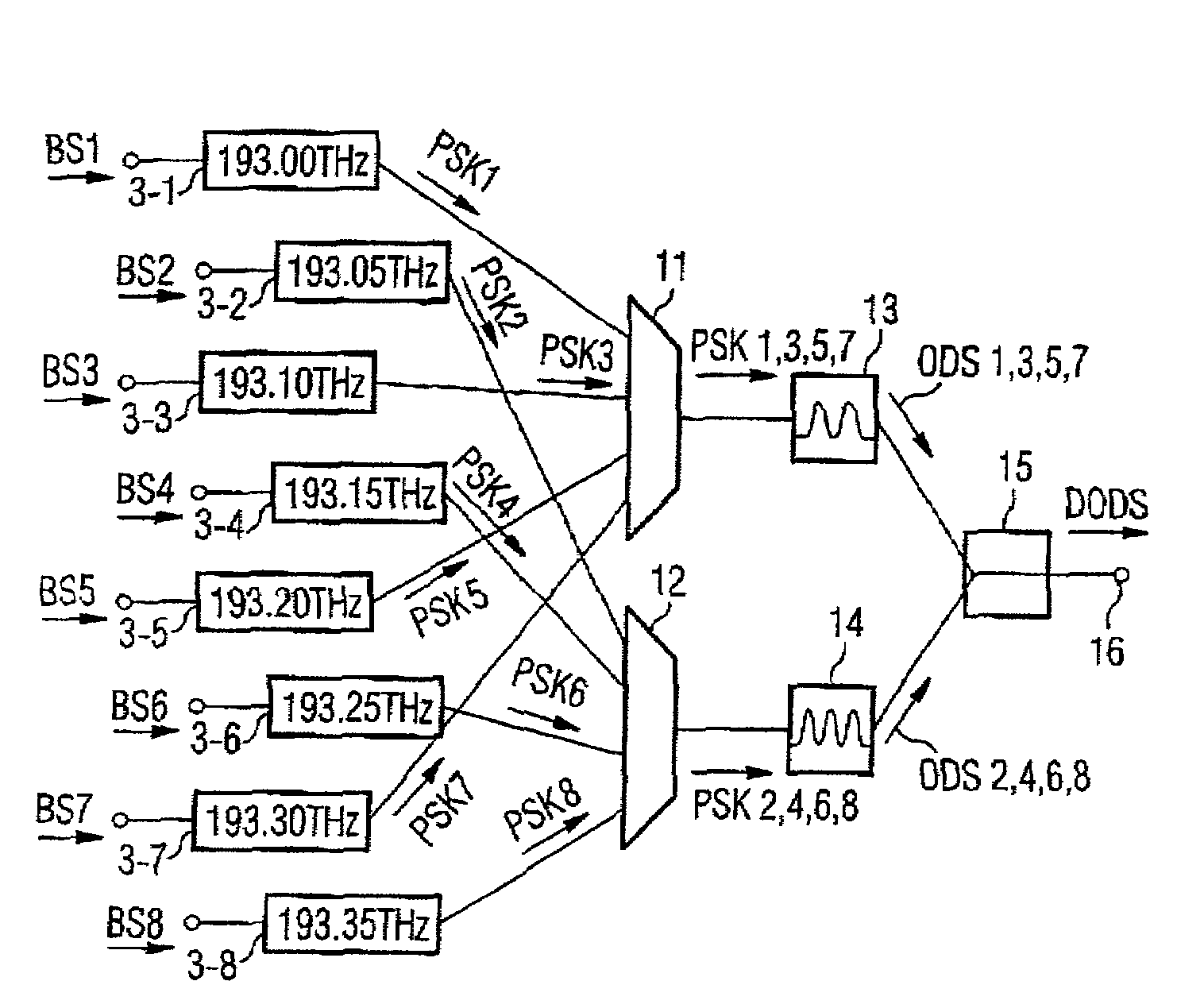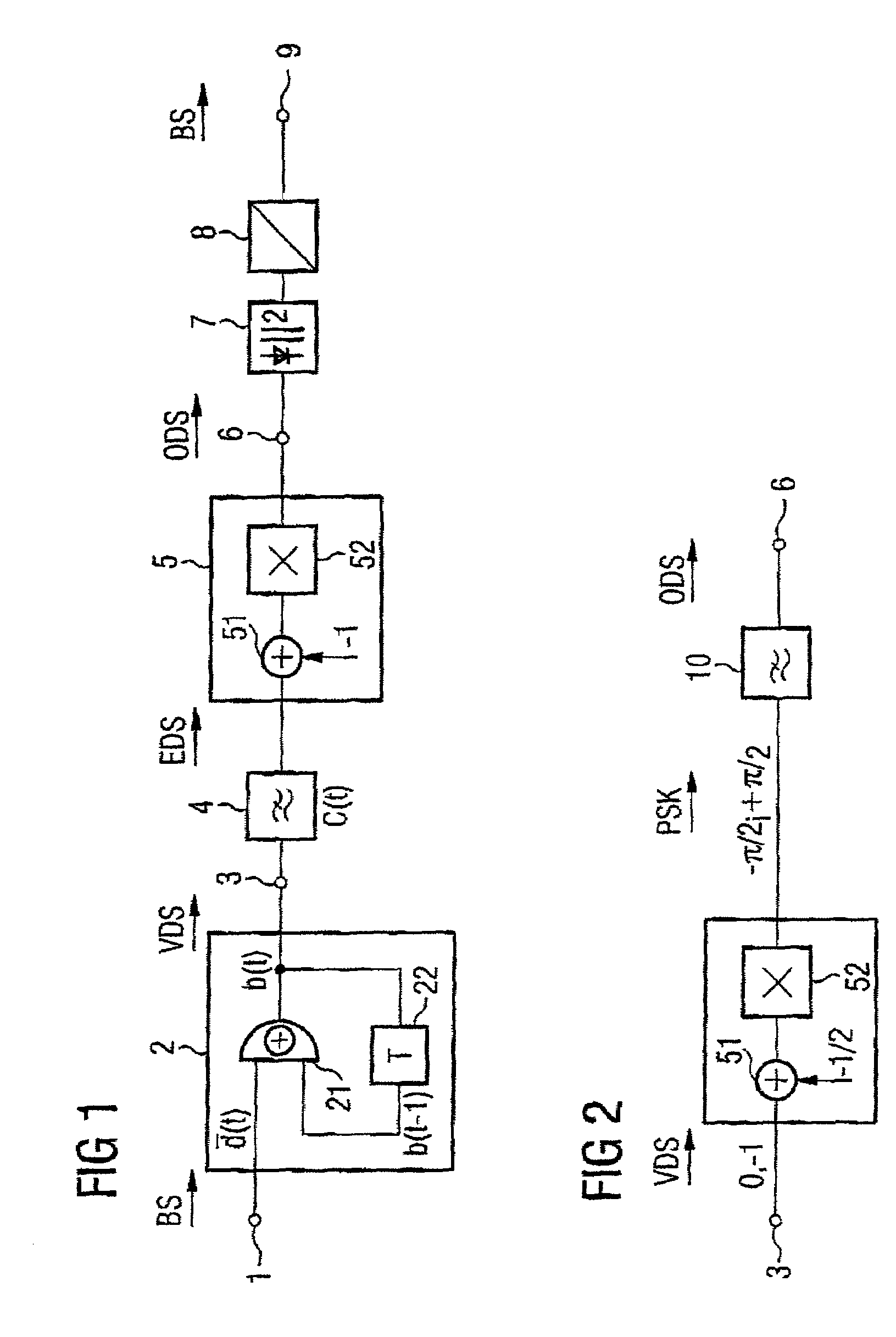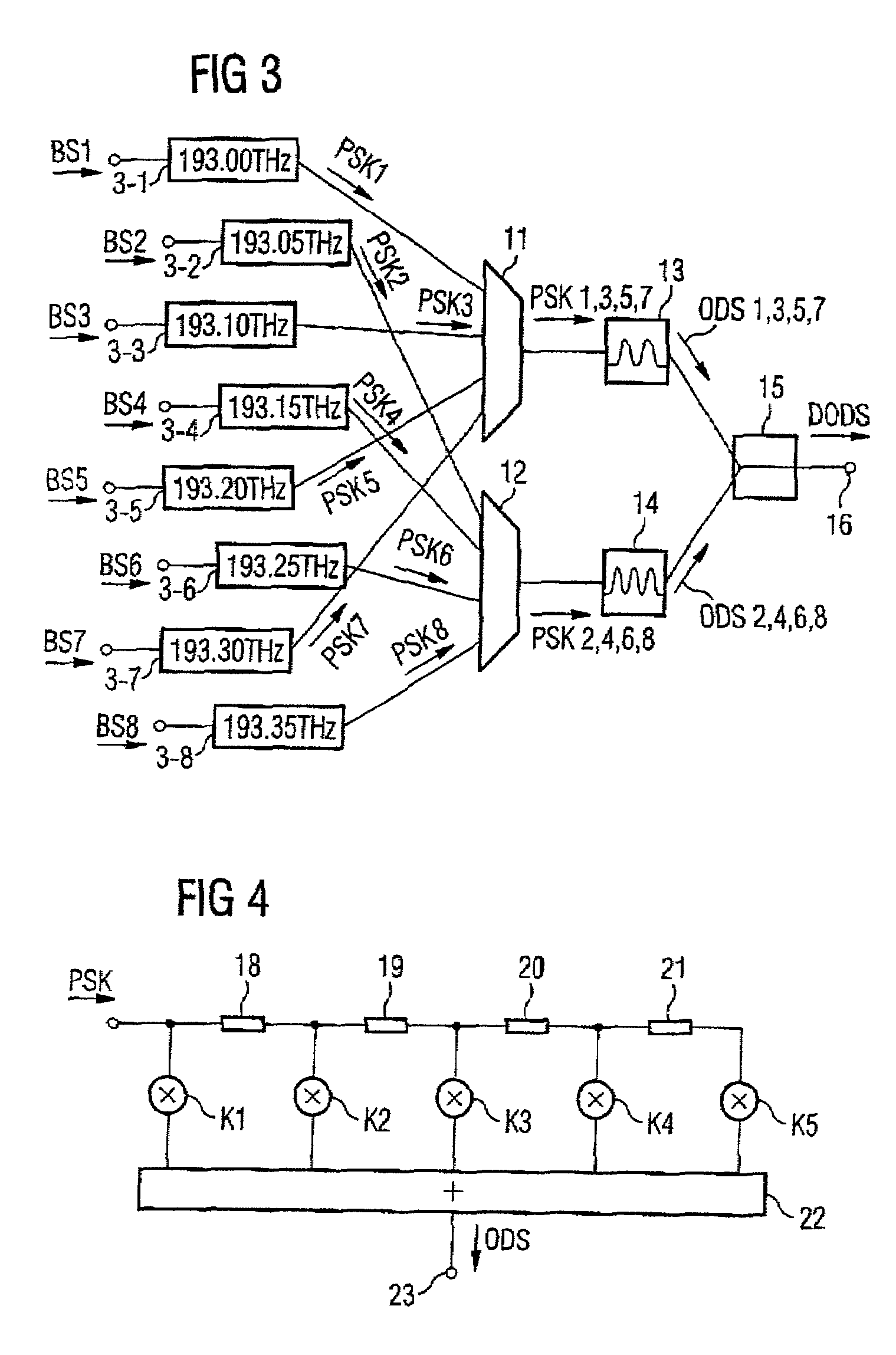Method and system for duobinary coding of optical signals
a duobinary coding and optical signal technology, applied in the direction of code conversion, multiplex communication, electrical apparatus, etc., can solve the problems of difficult to drive the modulator satisfactorily in both directions, general disadvantage of optical systems, and high transmission rate of approximately 40, so as to avoid spectral broadening and deterioration of signal-to-noise ratio, small channel separation, and the effect of saving considerable complexity
- Summary
- Abstract
- Description
- Claims
- Application Information
AI Technical Summary
Benefits of technology
Problems solved by technology
Method used
Image
Examples
Embodiment Construction
[0015]FIG. 1 shows a known arrangement for duobinary coding of an optical signal. This includes a series circuit formed by a precoder 2, whose data input 1 is supplied with a (possibly inverted) binary signal BS, an electrical filter 4 and a phase modulator 5, at whose output 4 an optical duobinary signal ODS is emitted. A Mach-Zehnder modulator 52 with a drive circuit 51 is used as the modulator 5. Elements which are not significant to the present invention are not illustrated.
[0016]The precoder 2, in this case in the form of an exclusive-OR gate 21 and a delay element 22 (which, if required, also contains an inverter), sconverts the binary signal BS, which has the states 0 and 1, to a precoded duobinary signal VDS in accordance with the function b(t)= d(t)⊕b(t−1). The filter 4 which is used as a coder, uses this to produce a duobinary signal EDS with the states 0, 1 and 2, by superimposition of the binary states. The drive circuit 51 converts these states to suitable drive signals...
PUM
 Login to View More
Login to View More Abstract
Description
Claims
Application Information
 Login to View More
Login to View More - R&D
- Intellectual Property
- Life Sciences
- Materials
- Tech Scout
- Unparalleled Data Quality
- Higher Quality Content
- 60% Fewer Hallucinations
Browse by: Latest US Patents, China's latest patents, Technical Efficacy Thesaurus, Application Domain, Technology Topic, Popular Technical Reports.
© 2025 PatSnap. All rights reserved.Legal|Privacy policy|Modern Slavery Act Transparency Statement|Sitemap|About US| Contact US: help@patsnap.com



